Your Ultimate Guide to a Killer SaaS Go-to-Market Strategy
saas go to market strategy: You’ve done it. After countless late nights, gallons of coffee, and wrestling with code, your SaaS product is finally ready. — learn
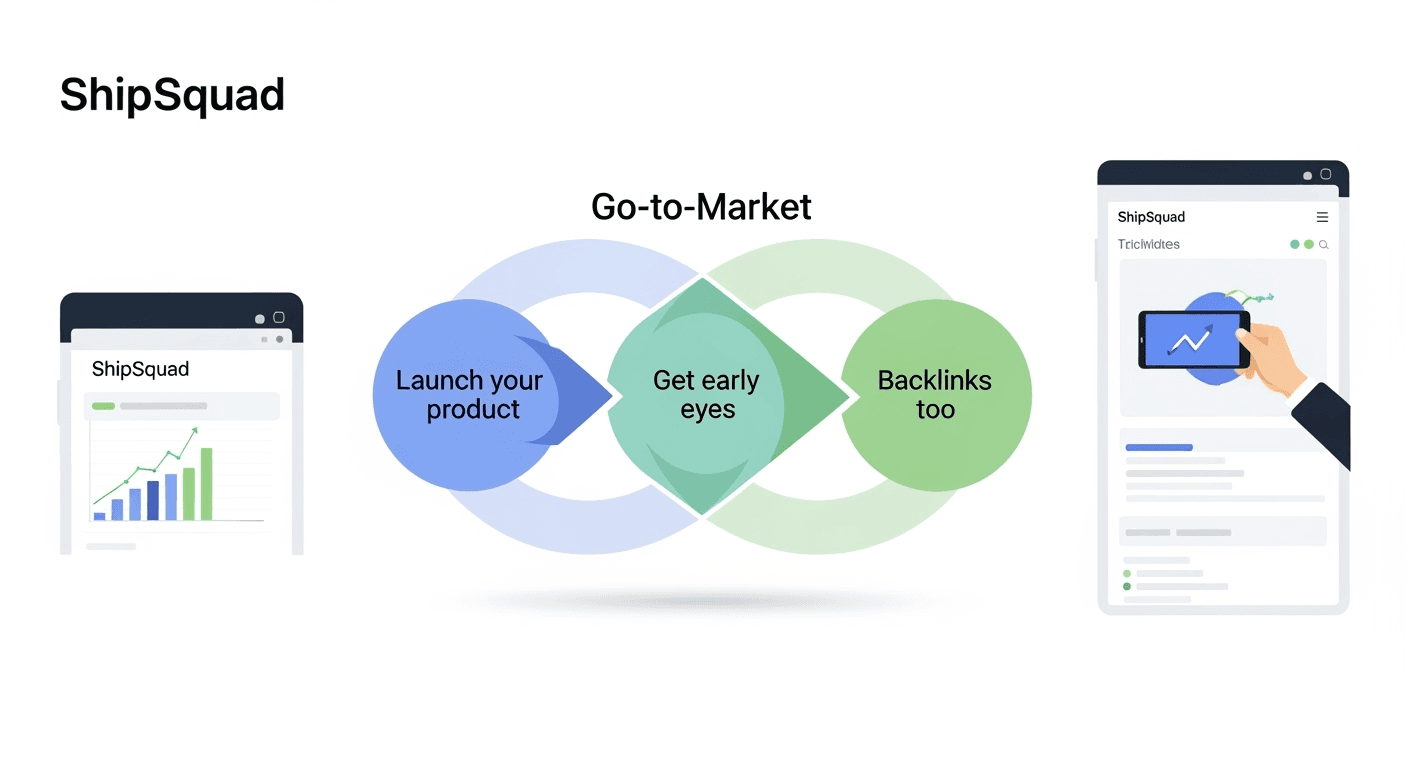
You’ve done it. After countless late nights, gallons of coffee, and wrestling with code, your SaaS product is finally ready. But now comes the scary part: launching. How do you go from a product nobody knows to one that people can't stop talking about? The answer lies in a powerful, well-crafted SaaS go-to-market strategy.
For indie makers and early-stage founders, launching a product without an audience can feel like shouting into the void. This guide is your roadmap. We'll break down what a SaaS go-to-market strategy is, why it's non-negotiable, and how you can build one that gets you the visibility, early users, and precious feedback you need to grow—without a massive budget.
Table of Contents
- What is a SaaS Go-to-Market Strategy (and Why You Can't Afford to Skip It)?
- The Core Ingredients of a Winning SaaS GTM Plan
- Popular GTM Models: Finding the Right Fit for Your SaaS
- The Indie Maker's Launch Dilemma: When "Build It and They Will Come" Fails
- Choosing Your Launchpad: A Comparison of Early-Stage Platforms
- Real-World Examples: SaaS Go-to-Market Strategy in Action
- Building Momentum After Launch Day
- Conclusion: Your Launch is Just the Beginning
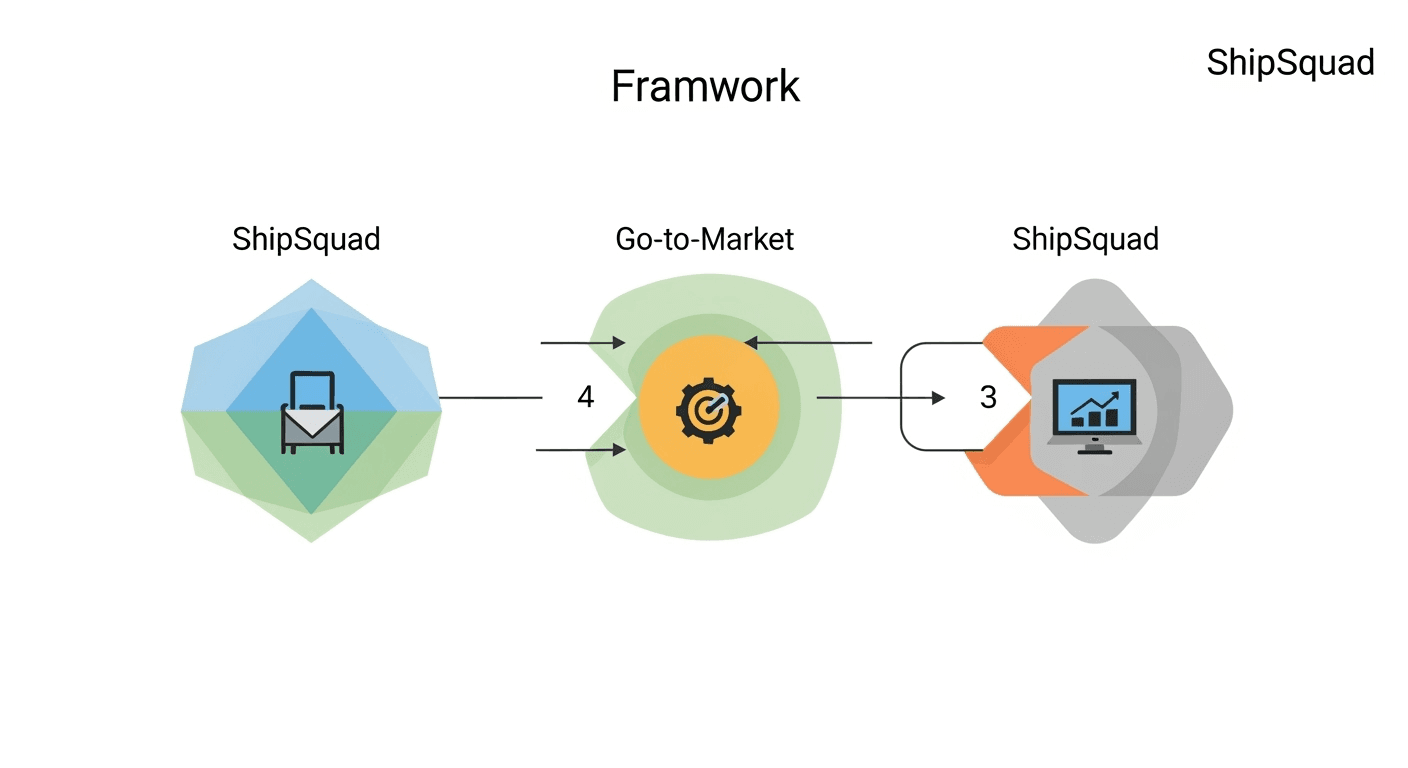
What is a SaaS Go-to-Market Strategy (and Why You Can't Afford to Skip It)?
A go-to-market (GTM) strategy is essentially your action plan for launching a new product into the market and reaching your target customers. Think of it as a detailed blueprint that outlines how you'll introduce your product, connect with the right audience, and stand out from the competition. For a SaaS business, this isn't just a "nice-to-have"; it's a critical component for survival.
Recent data shows that a staggering 90% of SaaS startups fail within the first few years. A leading cause for this is a lack of product-market fit or a poorly executed launch strategy. About 13% of failures are directly attributed to an inadequate GTM strategy.
Without a plan, you're just guessing. You're throwing spaghetti at the wall and hoping something sticks. A solid SaaS go-to-market strategy turns guesswork into a deliberate, step-by-step process that aligns your product with market needs and gives you the best possible chance of success.
The Core Ingredients of a Winning SaaS GTM Plan
Every successful SaaS go-to-market strategy is built on a few fundamental pillars. Getting these right is the difference between a launch that fizzles out and one that catches fire.
Nailing Your Ideal Customer Profile (ICP)
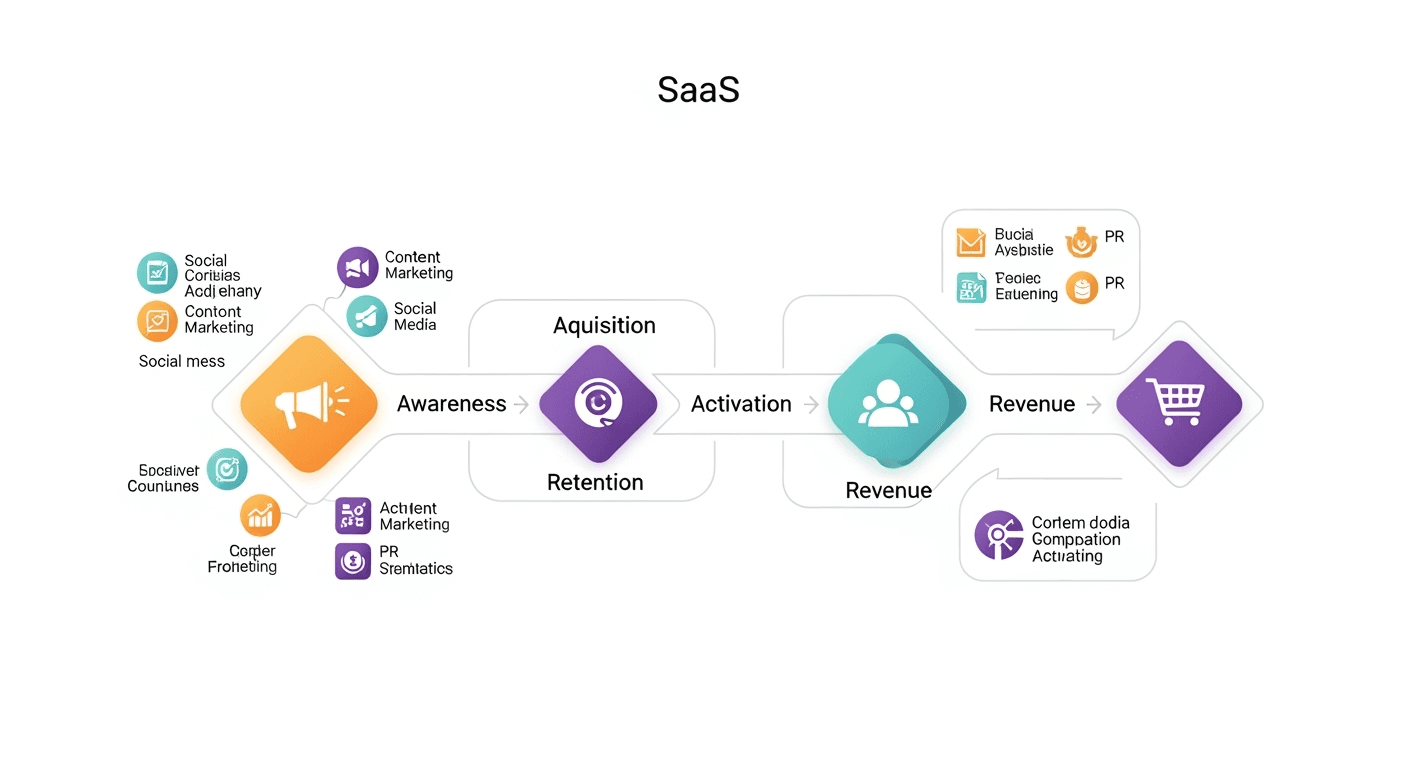
Ask yourself:
- What is the biggest challenge this person faces that my product solves?
- What does a "win" look like for them?
- What other tools are they already using?
- Are they in specific Slack communities, subreddits, or forums?
Understanding your ICP is the foundation of your entire strategy, from your messaging to the marketing channels you choose.
Crafting a Value Proposition That Clicks
Your value proposition is a clear, concise statement that explains the unique benefit your product offers and why a customer should choose you over a competitor. It's not a list of features; it's the promise of a solution to their problem.
A great value proposition answers three questions:
- What is it? (e.g., A communication platform for teams)
- Who is it for? (e.g., Tech startups and small businesses)
- How does it solve their problem? (e.g., By reducing email overload and streamlining conversations)
Slack (https://slack.com) is a classic example. Their initial value proposition was all about being a simpler, more organized alternative to internal email, a pain point their target audience felt deeply.
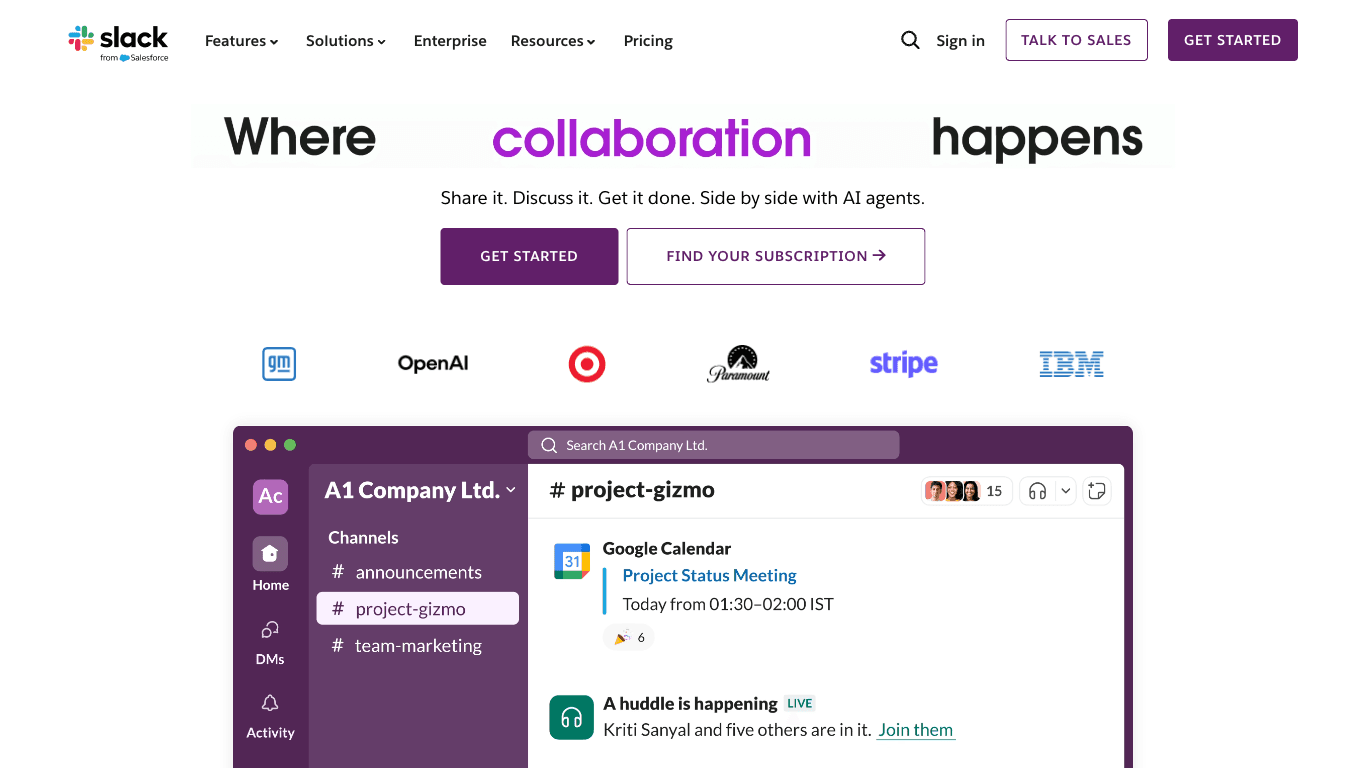
Choosing Your Pricing and Positioning
Your pricing isn't just a number; it's a reflection of your product's value and a key part of your SaaS go-to-market strategy. For early-stage startups, the goal is often to encourage trial and adoption.
Common models include:
- Freemium: Offer a basic version for free to attract a large user base, with paid plans for advanced features. This is a cornerstone of product-led growth.
- Tiered Pricing: Create different plans based on features or usage, allowing customers to scale as they grow.
- Usage-Based: Price based on consumption (e.g., per API call, per gigabyte of storage).
Your pricing should align with the value your customers receive and the GTM model you choose.
Selecting Your Channels
Where will you find your first users? You can't be everywhere at once, especially with a limited budget. A smart SaaS go-to-market strategy involves picking a few channels and mastering them.
These could include:
- Content Marketing: Blogging, creating guides, and SEO.
- Community Engagement: Being active in relevant online communities.
- Social Media: Building a presence on platforms where your ICP is active.
- Launch Platforms: Using dedicated sites to get initial visibility and feedback.
For indie makers, the right launch platform can be a game-changer, providing that initial burst of traffic and validation.
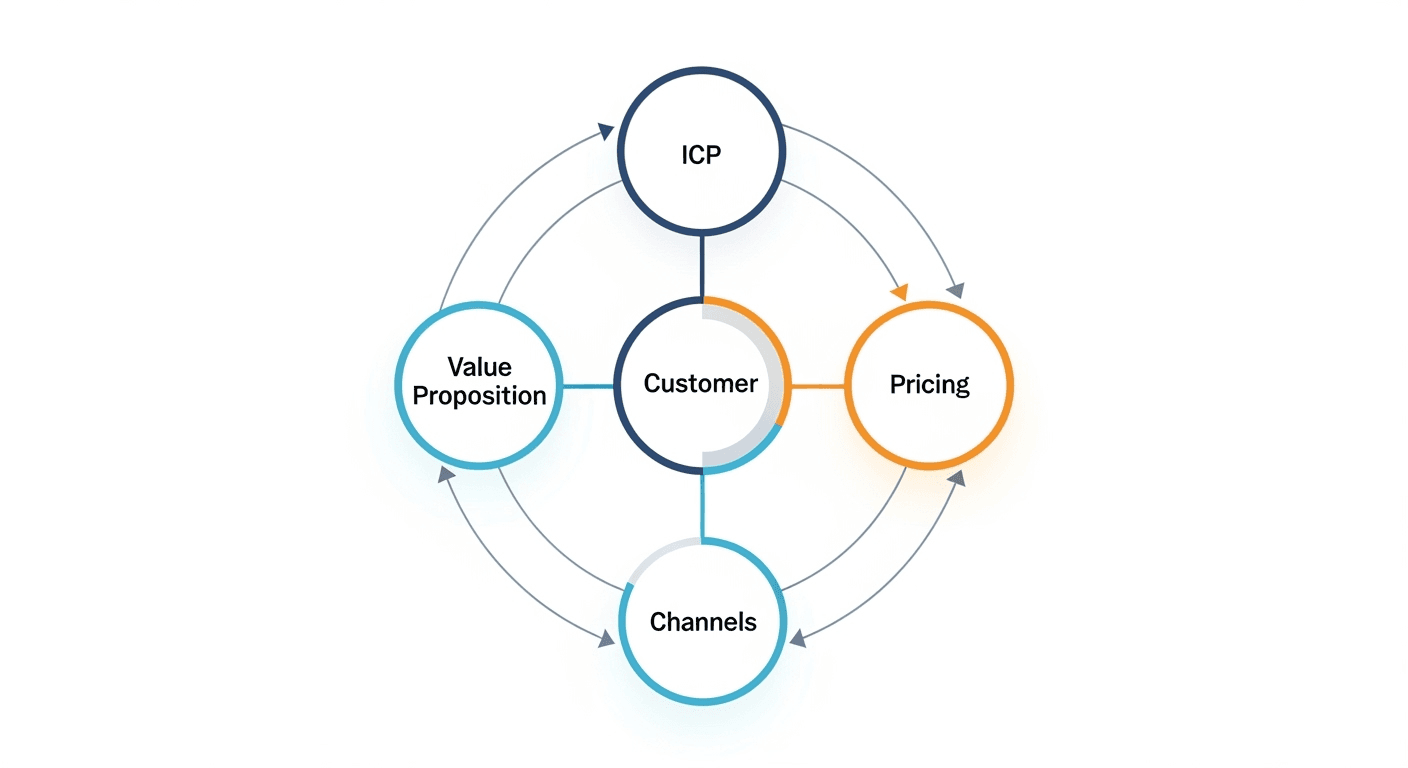
Popular GTM Models: Finding the Right Fit for Your SaaS
There isn't a one-size-fits-all approach to a SaaS go-to-market strategy. The model you choose depends on your product's complexity, price point, and target audience.
- Sales-Led Growth (SLG): This traditional model relies on a sales team to find, engage, and close customers. It's common for high-priced, complex B2B products that require demos and negotiation. Think Salesforce (https://www.salesforce.com).

- Marketing-Led Growth (MLG): Here, marketing efforts like content, ads, and SEO generate leads that are then nurtured and passed to a sales team. HubSpot (https://www.hubspot.com) is a prime example of a company that grew through inbound marketing.
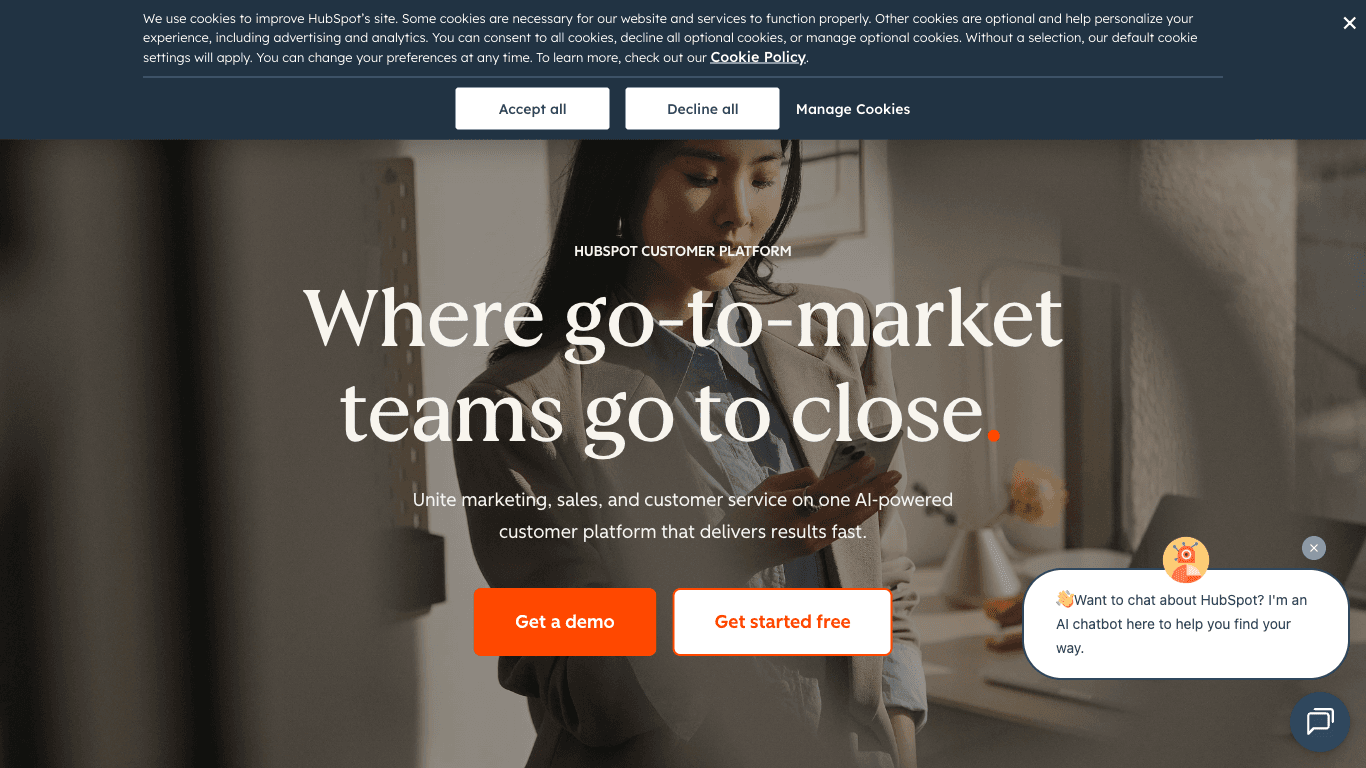
- Product-Led Growth (PLG): This is the go-to model for many modern SaaS companies. PLG uses the product itself as the main driver of customer acquisition, conversion, and expansion. By offering a free trial or freemium version, users can experience the product's value firsthand before paying. Companies like Calendly (https://calendly.com) and Slack have used PLG to achieve explosive, viral growth.
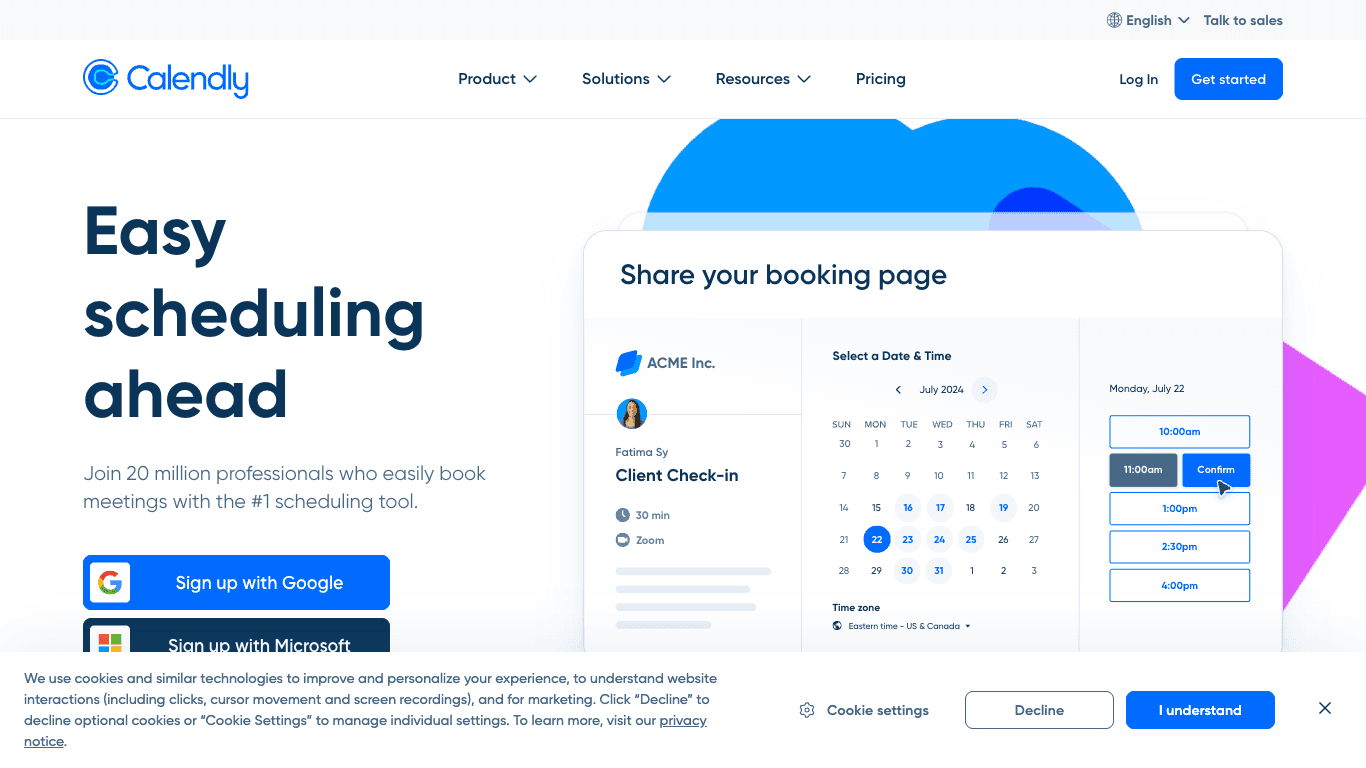
For most indie makers and early-stage founders, a product-led growth approach is often the most effective. It lowers customer acquisition costs and allows the product to sell itself, which is perfect when you don't have a large sales or marketing team.
The Indie Maker's Launch Dilemma: When "Build It and They Will Come" Fails
Here’s a painful truth for many founders: building a great product is only half the battle. The biggest challenge is often getting those first users. You launch your passion project, post about it on Twitter, and… crickets.
This is a common and disheartening experience. Traditional launch platforms can feel like a popularity contest, where products from established companies or well-known founders dominate the front page, leaving indie projects buried. Many platforms also fail to provide lasting value; your product gets a brief moment in the spotlight, and then it's gone.
Even more critically, this quiet launch means you miss out on two essential ingredients for growth:
- Early Feedback: How can you improve your product if no one is using it? Direct, honest feedback from early adopters is invaluable for identifying bugs, validating features, and finding product-market fit.
- Credible Backlinks: Backlinks are a huge factor in SEO. They act as "votes of confidence" from other sites, signaling to search engines that your product is credible and relevant. A launch that generates zero backlinks does nothing to help your long-term organic growth.
This is precisely the problem that new and innovative platforms are trying to solve. They recognize that indie makers need more than a fleeting moment of fame; they need a community, genuine feedback, and a launch that contributes to their long-term SEO success.
Choosing Your Launchpad: A Comparison of Early-Stage Platforms
Your launch day is a pivotal moment in your SaaS go-to-market strategy. The platform you choose can make all the difference. While there are many options, they aren't all created equal, especially for solo builders.
| Feature | Product Hunt | BetaList | ShipSquad (shipsquad.space) |
|---|---|---|---|
| Primary Focus | General tech products, often from established companies. | Pre-launch startups, building a waitlist. | Indie makers & early-stage builders seeking validation, visibility, and SEO growth. |
| Cost | Free to submit. | Free (with long wait) or paid options to skip the line. | Completely free, no fees or tracking. |
| Visibility Model | Daily ranking system; visibility is often short-lived. | One-time feature in a newsletter. | Products get a permanent showcase, fostering long-term discovery. |
| SEO Impact | Can generate traffic, but backlinks are not guaranteed. | Minimal direct SEO impact. | Designed to provide quality, credible backlinks to boost your domain authority. |
| Community | Large, broad audience. | Audience of early adopters. | A focused community of indie builders and early adopters dedicated to providing constructive feedback. |
Featured Solution: ShipSquad
For indie makers and early-stage founders, ShipSquad (shipsquad.space) stands out. It was built from the ground up to solve the core problems that builders face.
What I'd tell a friend: "If you're launching something new and don't have a huge following, check out ShipSquad. It's free, you'll get real eyes on your product from other makers, and you'll get backlinks that actually help your SEO down the road. It's a no-brainer for getting that initial push."
ShipSquad’s entire model is designed to give your SaaS go-to-market strategy a powerful start. By focusing on providing tangible, long-term value through visibility and SEO benefits, it offers a launchpad that keeps on giving, long after launch day is over.
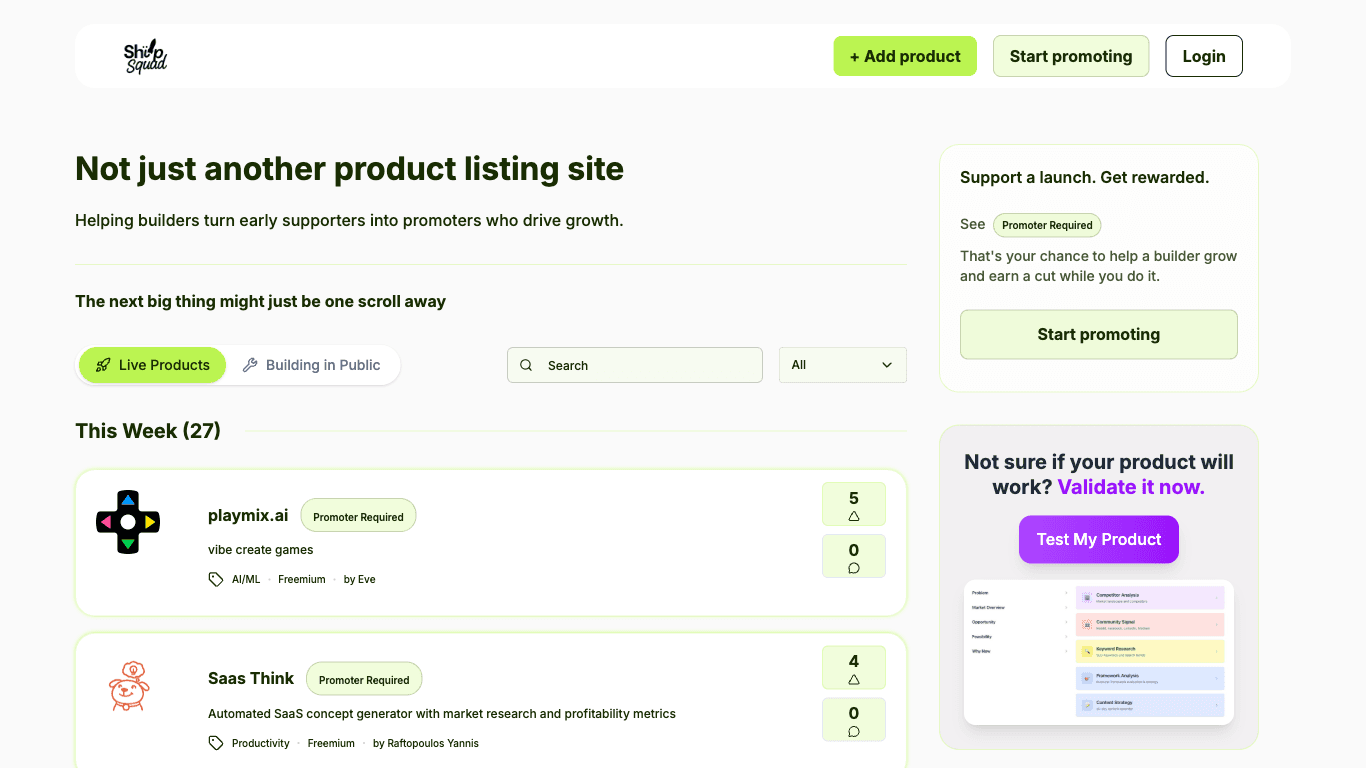
Real-World Examples: SaaS Go-to-Market Strategy in Action
Theory is great, but let's look at how this plays out in the real world.
Case Study 1: Dropbox and the Power of PLG
Dropbox (https://www.dropbox.com) is a legendary example of a product-led SaaS go-to-market strategy. They faced a huge challenge: how do you explain a product that people don't even know they need?
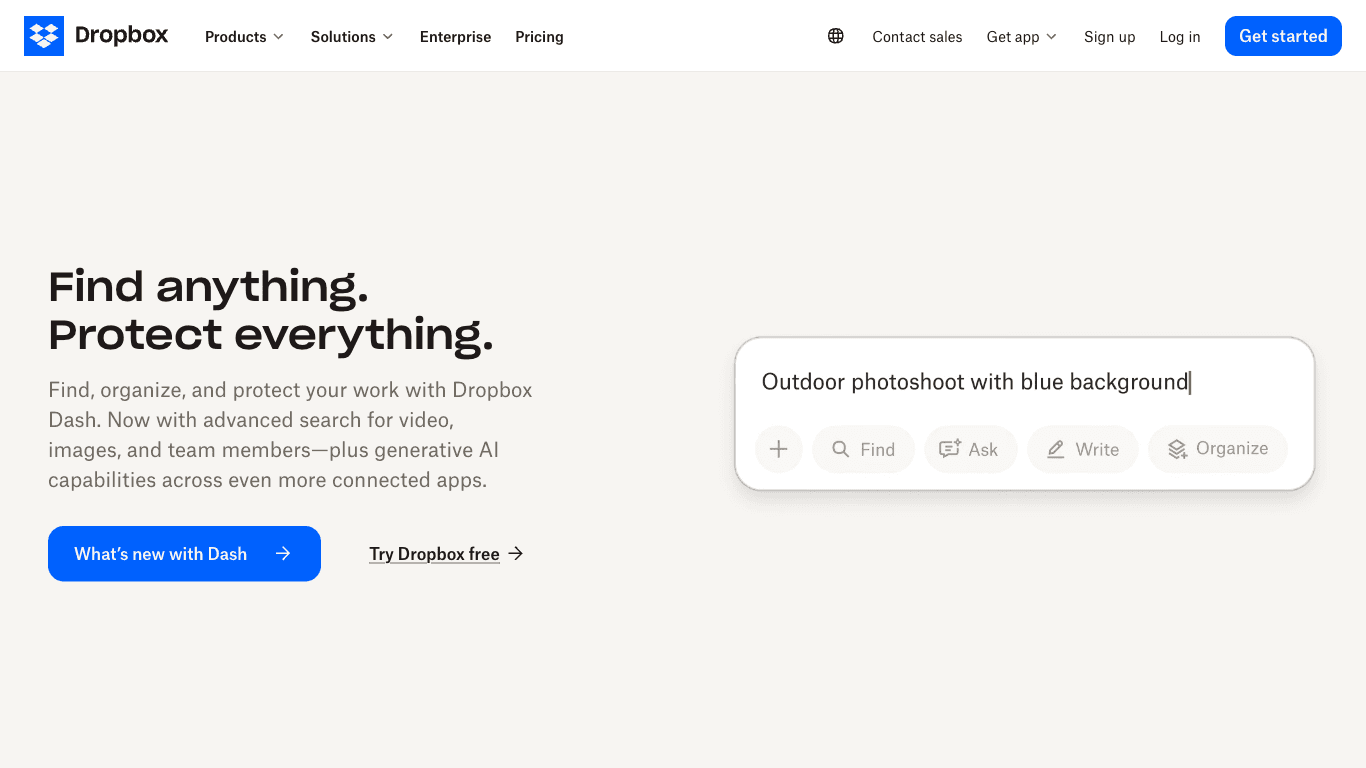
- The Strategy: Instead of spending millions on ads, they focused on a frictionless user experience with a powerful viral loop. They offered free storage and made it incredibly easy to share files with others.
- The Viral Loop: To get more free space, users just had to invite their friends. Each referral benefited both the sender and the new user.
- The Result: Dropbox grew by a mind-blowing 3900% in just 15 months, acquiring millions of users with a tiny marketing budget. Their product was their marketing.
Case Study 2: The Community-First Launch (A Relatable Story)
Let's imagine an indie maker named Alex. Alex spent six months building a fantastic project management tool for freelancers. She launched on a major platform, got a few upvotes, and then... silence. Her traffic flatlined, and she received almost no feedback.
- The Challenge: Alex had a great product but no audience. Her initial launch failed to generate momentum, leaving her with no users and no SEO authority.
- The Solution: Dejected but not defeated, Alex discovered a community-focused platform like ShipSquad (shipsquad.space). She submitted her product again. This time was different. Because the platform was designed for makers, her project got noticed by people who understood the grind.
- The Measurable Result:
- She received detailed feedback from over 30 early adopters, helping her prioritize her next features.
- Her launch generated 10 high-quality backlinks from the platform and user profiles.
- Within two months, her organic search traffic started to climb as Google recognized the credibility of those backlinks.
Alex's story shows that for indie makers, the right launch platform is a critical part of a successful SaaS go-to-market strategy. It's not about the size of the crowd, but the quality of the engagement.
Building Momentum After Launch Day
A successful launch isn't the finish line; it's the starting gun. Your SaaS go-to-market strategy must include a plan for what happens next.
- Leverage Feedback: Take all the feedback you received from your launch and use it. Fix bugs, refine features, and communicate these updates to your new users. This shows you're listening and builds a loyal community.
- Build on Your SEO Foundation: A launch on a platform like ShipSquad gives you an initial SEO boost. Don't let it go to waste! Start a blog, create content that addresses your ICP's pain points, and continue building quality backlinks.
- Nurture Your New Community: The early adopters who found you during your launch are your biggest asset. Engage with them, make them feel valued, and turn them into advocates for your product.
Conclusion: Your Launch is Just the Beginning
Crafting a SaaS go-to-market strategy can feel daunting, but it's the most important work you'll do outside of building your product itself. It forces you to think deeply about your customer, your value, and your path to reaching them.
For indie makers and bootstrapped founders, the odds can feel stacked against you. But the landscape is changing. You no longer have to compete for a fleeting moment on crowded platforms. New solutions are emerging that understand the unique challenges you face.
Platforms like ShipSquad (shipsquad.space) are more than just a place to post a link; they are a strategic part of a modern SaaS go-to-market strategy. They provide the three things every new product needs to survive and thrive: visibility to the right audience, validation through genuine feedback, and a foundation for long-term SEO growth. Don't just launch your product; give it the strategic start it deserves.
Recommended Videos
FAQs
1. What is the most important part of a SaaS go-to-market strategy?
While all components are crucial, deeply understanding your Ideal Customer Profile (ICP) is the most important. Every other part of your strategy—from messaging to marketing channels—flows from knowing exactly who you are serving and what they need.
2. How long does it take to develop a GTM strategy?
It varies, but for an early-stage startup, you should spend at least a few weeks on research, customer interviews, and planning before you write a single line of launch code. It's an ongoing process that you'll refine as you learn more about your market.
3. Can I launch without a go-to-market strategy?
You can, but it's incredibly risky. Launching without a GTM strategy is like setting sail without a map or a compass. You might get lucky, but it's more likely you'll get lost. A poor GTM strategy is a key reason why many SaaS startups fail.
4. What's the difference between a marketing plan and a GTM strategy?
A marketing plan focuses specifically on the tactics you'll use to attract and convert customers (e.g., content, ads, social media). A GTM strategy is broader; it's the overarching plan that includes who your customer is, your value proposition, your pricing model, and your sales and distribution channels, in addition to your marketing plan.
5. How much should I budget for my SaaS go-to-market strategy?
For indie makers, the initial budget can be close to zero if you focus on sweat equity. A product-led approach combined with launching on free platforms like ShipSquad (shipsquad.space), engaging in communities, and creating content are all low-cost, high-impact strategies.
6. How do I measure the success of my GTM strategy?
Success can be measured with key performance indicators (KPIs) like free trial sign-ups, conversion rate from free to paid, customer acquisition cost (CAC), and customer lifetime value (LTV). In the very early days, focus on qualitative metrics like the quality of user feedback and the number of engaged early adopters.